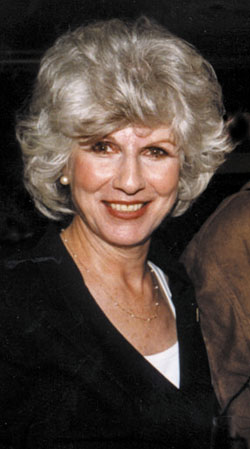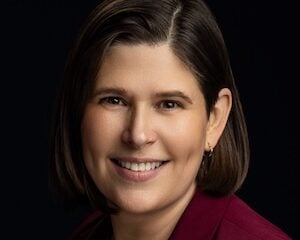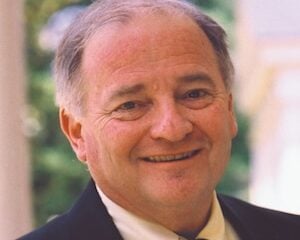A radio woman’s tale: reclaiming her voice

"I thought my radio career was over," Rehm says of her struggles with spasmodic dysphonia.
All of these years, Diane Rehm’s voice: the vehicle for ordinary sentences she enunciates so emphatically that they carry their utmost weight. But creaky on the edges, hitting snags. It’s a voice reliably there at midmorning on her NPR talk show, familiar; listeners love it. Except for the inevitable detractors, who say they find Rehm grating, or schoolmarmish.
Love or hate that voice, it’s illuminating to learn that a physical problem contributes to Rehm’s on-air distinctiveness. Doctors earlier this year began treating Rehm for spasmodic dysphonia, a neurological condition in which the vocal cords constrict when they’re not supposed to. “It’s that very low, very gravelly stuff that grabs and that rumbles,” Rehm says.
Today she’s more than ever attuned to the quality of people’s voices, and notices when guests sound as if they might have “SD.” Two women have sounded that way to Rehm, and after each show she quietly suggested they have their voices checked.
Rehm’s own diagnosis in May 1998 ended a four-year search to understand why her voice was deteriorating. By that point, speaking was such a strain, along with her anxiety about speaking, that she’d gone off the air. She discusses this period, her early life and her radio career in a new book, Finding My Voice.
It would have to be every radio host’s nightmare. Rehm’s voice seemed to be choking off. It was so bad by January of 1998, she couldn’t count on being able to emit words. During shows, instead of concentrating on the conversation, she worried about her next turn to talk. When she did, it sounded to her as if someone were strangling her. “I knew that people were saying, ‘What in God’s name is the matter with this woman’s voice?’,” she says. “‘How can she possibly be on the radio?'”
She’d first noticed a tremor about four years earlier, during a taping session. A producer had asked if she were nervous, and she’d waved the suggestion away. Now she was so anxious she couldn’t sleep at night. In the mornings at home, she’d worry about the coming pretaping sessions, which usually took just five to 10 minutes but these days required 20 or 30. “When the program went on the air, live, at 10:07 a.m.,” she writes, “I’d say, ‘Good Morning’ to my guests with as much strength as I could muster, trying to start the conversation with as brief a question as possible . . .”
Employees of the Diane Rehm Show were noticing. Engineer Toby Shriner would later tell Nightline during a segment on Rehm that staffers considered “saying something” to Rehm about her increasing difficulty getting through an entire show. And senior producer Sandra Pinkard said the show’s writers began crafting shorter sentences.
The Diane Rehm Show
One day Rehm’s boss, WAMU General Manager Kim Hodgson, stepped into her office and shut the door. “He said, ‘I’m here to ask you how you are.’ And I said, ‘I’m fine. But you’re asking about my voice, aren’t you?'” It was the first time Rehm would discuss with Hodgson her strange malady and her efforts to find out what was wrong. She’d been to several doctors and therapists who’d offered various diagnoses: she was breathing wrong, she had acid reflux, she needed beta-blocker pills (which performers often use to quell nervousness). Hodgson suggested she try meditation or a course in relaxation. It was an appropriate conclusion for him to reach, she says.
Early on, Rehm herself assumed her voice problems had psychological origins. “I thought it was my head working on my vocal cords,” she would later tell Ted Koppel. Though she now rejects that as the explanation, she seems to allow for a more mysterious connection between the SD and her psyche. “I think that there are very few accidents in this life, and I think what I began to experience goes all the way back to the start of my life and my belief in myself, my lack of security, my lack of self-confidence, lack of college education, lack of credentials coming into this business and then reaching a point where I was talking with people like you,” she told Koppel. In her book, she says she still doesn’t know if her hectic life’s pace or discomfort with her own success were contributors.
Rehm traces some of her personal angst to a difficult childhood relationship with her mother, a woman new to this country, distant from her two daughters, who according to Rehm would punish both corporally and by not talking to her, for days or even weeks. “The silence is so deep,” Rehm recalls in her book.
Rehm is a first-generation Arab-American, and her parents, Wadie and Eugenie Aed, did not encourage her to go to college when she was a young woman in the 1950s. They expected she would marry and care for a household. Rehm did marry at the age of 19, but was unsuited to the role her first husband had in mind, and she ultimately instigated what she says was the first divorce in her family’s Washington-area Arab community. A short time later she would meet a charming lawyer, John Rehm.
Diane Rehm wouldn’t find her way to radio until many years later, after her two children were school-aged, and amidst the cultural shifts of the early 1970s. Rehm’s fellow students in a “New Horizons for Women” course urged her to try broadcasting; Rehm says to this day she’s not sure why. About this time, one of Rehm’s friends enthused about a new job as a volunteer producer at WAMU. Rehm asked if she might volunteer as well.
On Rehm’s first day at WAMU, then-station manager Susan Harmon had the 37-year-old newcomer join her on the air for a 90-minute discussion with a guest from the Dairy Council (“an awfully long time to talk about the food groups, I must admit,” Rehm writes). Apparently, Rehm more than held her own. Within a year she became a paid assistant producer.
After a false start in television that led Rehm away from WAMU, and then two years working as a correspondent for a physician’s radio network and a freelancer for AP Radio, Rehm returned to WAMU as host of the talk show she knew so well. WAMU changed the show’s name from Kaleidoscope to the Diane Rehm Show several years later.

Soon after Rehm’s show went national in 1995, she was taking calls with Hillary Clinton. But her local program on WAMU had attracted big-name guests for years.
Fast forward almost 20 years. NPR now distributes her show, taking the cue from WAMU, which had launched the program nationally in 1995. It was a move Rehm says she had to push Hodgson to make. “I had to fight to be allowed to go out and raise $250,000 to take this show national,” she says. “I raised every damn dime of that money myself.”
Once she did, prominent guests — many of them D.C.-based politicians familiar with Rehm’s program from its local years — were readily available. They included Hillary Clinton, cabinet members, members of Congress, authors galore. She had callers so loyal they’d take to task difficult, taciturn guests like Tom Clancy or Margaret Truman Daniels. Even as a local host, she’d had enough confidence in her program to kill interviews with stars like Tony Randall, who according to an anecdote in her book was unexplainably crass off-air. And her show already had enough clout that when a caller weighed in with new criminal allegations, this time of rape, against a top congressional aide who years earlier had been convicted of stabbing a woman almost to death, news outlets everywhere picked up the story. The next day, the aide announced his resignation.
A solution
What Rehm didn’t have in February 1998 was a healthy-sounding voice. Hodgson’s office visit had “just raised the level of my tension. I knew [awareness] wasn’t just around here. And I had already suspected that people around the country were wondering.”
She “crashed” about two weeks later. She’d taken a small prescribed dose of medication and caffeine, and felt her voice shaking uncontrollably on air for two hours. Mortified, Rehm decided nevertheless to keep that afternoon’s scheduled appearance before Women of Washington, even though her fellow panelists were all gossip columnists. She suffered through the program and rushed out of the building. Back at WAMU, she broke down. “I said [to Hodgson], ‘I’ve got to get out.’ And he was wonderful. He’s been wonderful the whole time. He never once failed me.”
Rehm’s big fear had been listeners detecting her voice problems. What’s interesting is that one of her listeners, who did indeed notice her struggles, was a surgeon at Johns Hopkins University Hospital — Paul Flint. It’s just “not the way medicine works these days” to recruit patients, Flint would tell Nightline, so despite his wife’s suggestion that he give Rehm a call, he didn’t contact her. But Rehm finally found her way to him at the recommendation of her internist, two months after taking her leave from the show. Flint made a fairly quick diagnosis: spasmodic dysphonia.
The treatment is this: injections of Botox — botulinum toxin — directly into the vocal cords. First a needle in the throat to kill pain, then the toxin to paralyze the cords. “It’s less horrible than you might think, because my husband’s there with me. And this doctor is so gentle and careful, and has now determined how much painkiller I need…. The Botox, in spite of the painkiller, because he has to move the needle around, hurts more, and sometimes it hurts a lot, and sometimes it hurts much less.” Since May, Rehm’s had three shots. The first two times, she lost her voice completely. It took six weeks the first time and four weeks the second to recover adequately for broadcasting. Tthe third time, she didn’t lose her voice completely, and needed only about three weeks.
But the critical feature of the treatments is that they work.
“And so I shall”
Rehm has with her speech therapist Susan Miller started a support group for people with spasmodic dysphonia. The two women expected 15 to 20 people for the first meeting and got 40 instead. The meetings of the group have opened Rehm’s eyes to just how severely SD can damage a person’s speech. Some can seldom utter more than a syllable. “I’m one of the lucky ones,” Rehm says. The good news is that Botox injections have proven to be 95-99 percent effective, according to Rehm; it’s just some people are “absolutely freaked” at the thought of injections in their throats, she says.
Rehm now talks about her work for SD awareness as a calling. “It seems to me, if God sends you something like this, there’s got to be a message here. And the message to me is, I’m in a position to talk about it, so I shall.”
Sept. 14, in a great hall at the Folger Shakespeare Library, Diane Rehm is speaking before a group of well-wishers celebrating her book. What’s noteworthy about the evening is the graciousness of words from the podium, by Hodgson, Rehm and her editor, but also the quality of Rehm’s voice. It has its trademark see-saw expressiveness, but more importantly, clarity and a lot of strength. Rehm expresses gratitude for her radio career. She had thought it was over, she says.
Despite a recent Washington Post article which seemed to suggest Rehm wants to retire in a year or two, Rehm says no. The show has only been in national distribution a few years; why would she leave now? “I have absolutely no plans to retire. None.”
Plus, there’s this seemingly never-ending well of support from listeners. “They say, primarily, ‘We don’t care how you sound. It’s who you are, it’s what’s coming out of your heart that matters.’ Over and over, e-mails and letters. It’s really something,” she says. In fact, Rehm says her ratings have gone up since the illness, perhaps because of the publicity.
So Rehm will continue, using substitute hosts for the periods when she needs the take injections and recover from them. Listeners don’t seem to mind her absences. “People have stayed with it. And have apparently rejoiced each time I’ve come back, and have said, ‘We’re with you. You know, take care of yourself. You gotta go for another shot, go for another shot.’ They’re all in it with me.”
EARLIER STORY
When a talk show works, the audience should get a lot of the credit.
RELATED LINKS
Websites of The Diane Rehm Show. Also: more information about spasmodic dysphonia on the site of the Dystonia Medical Research Foundation.








